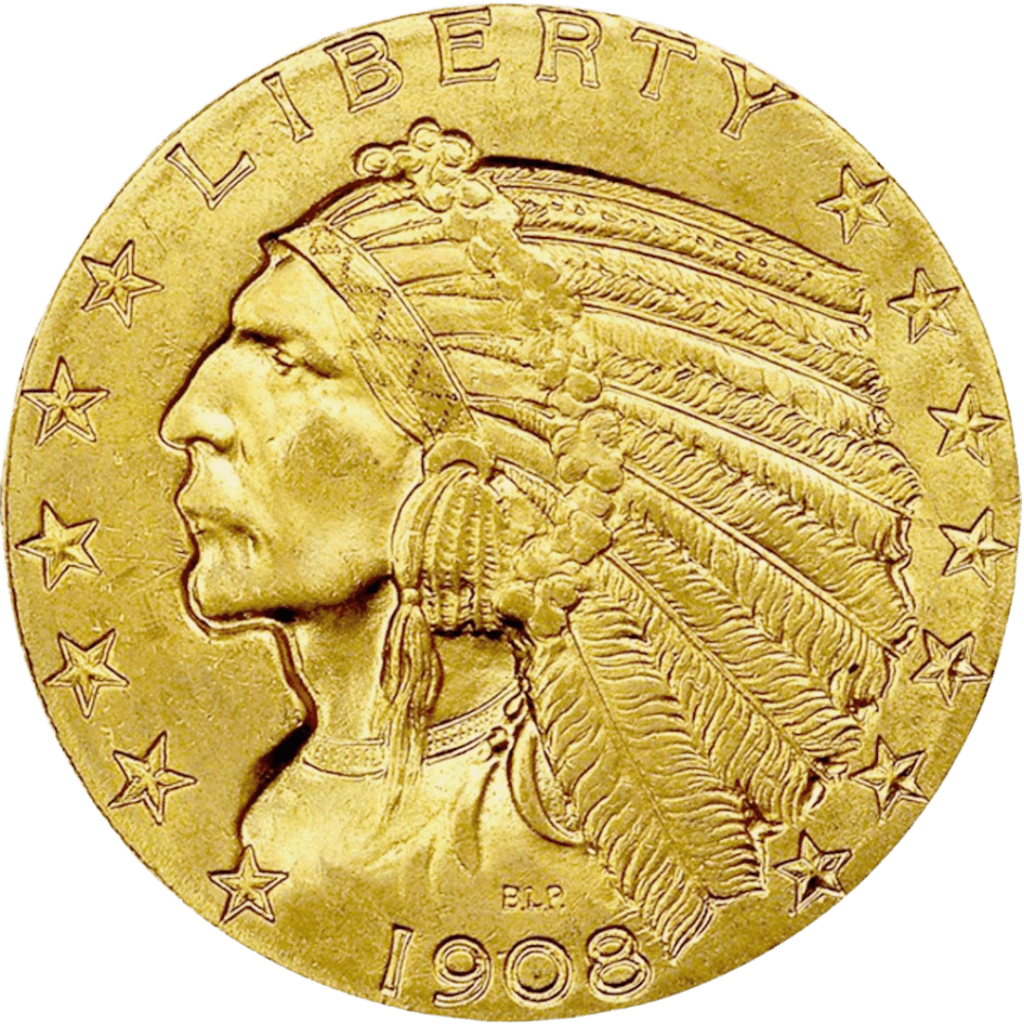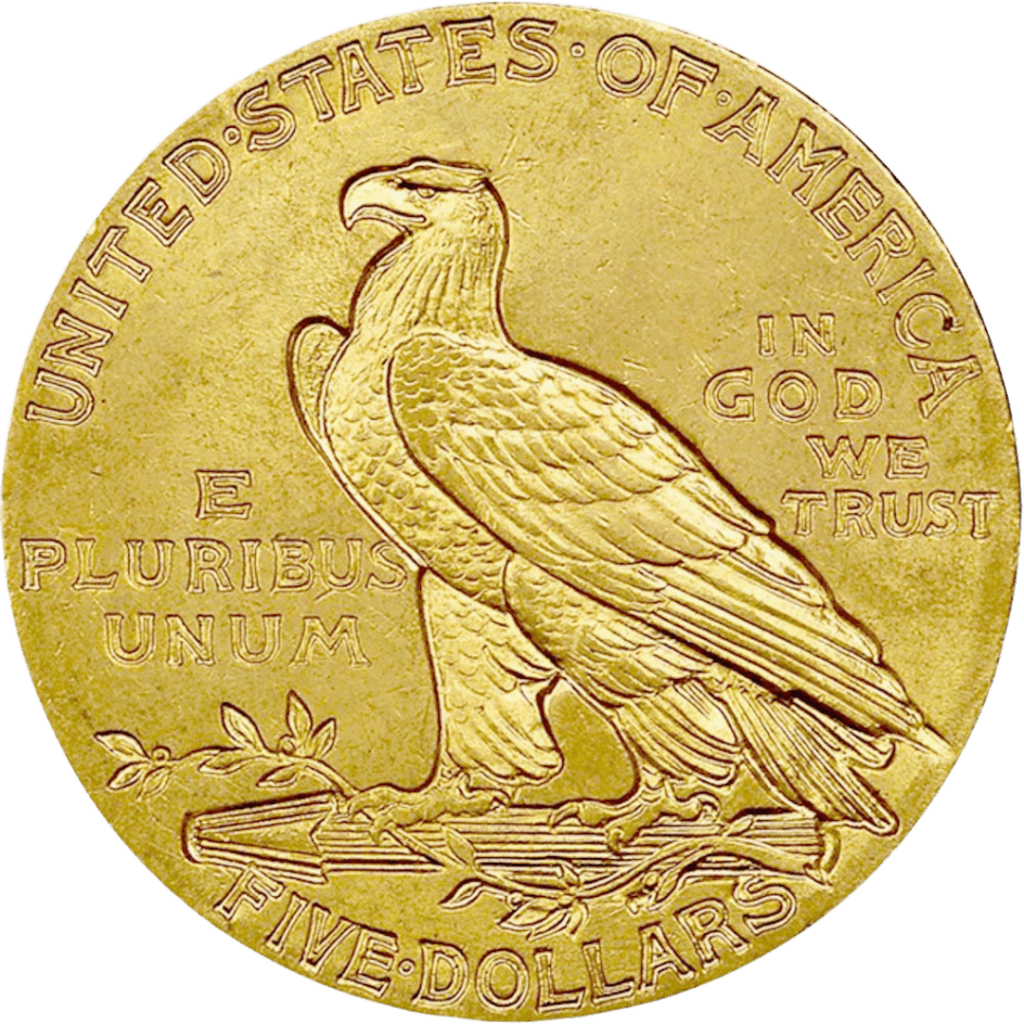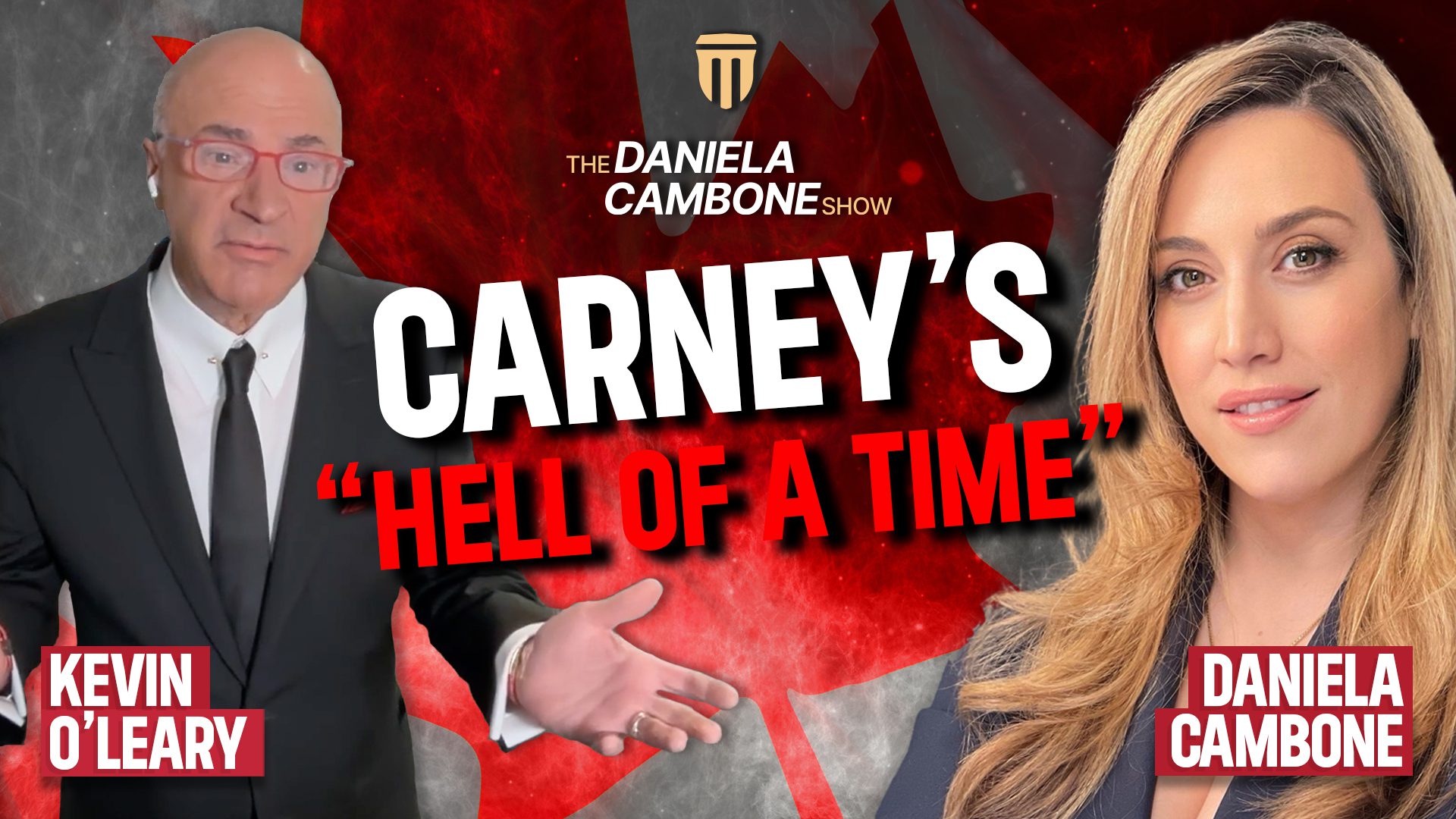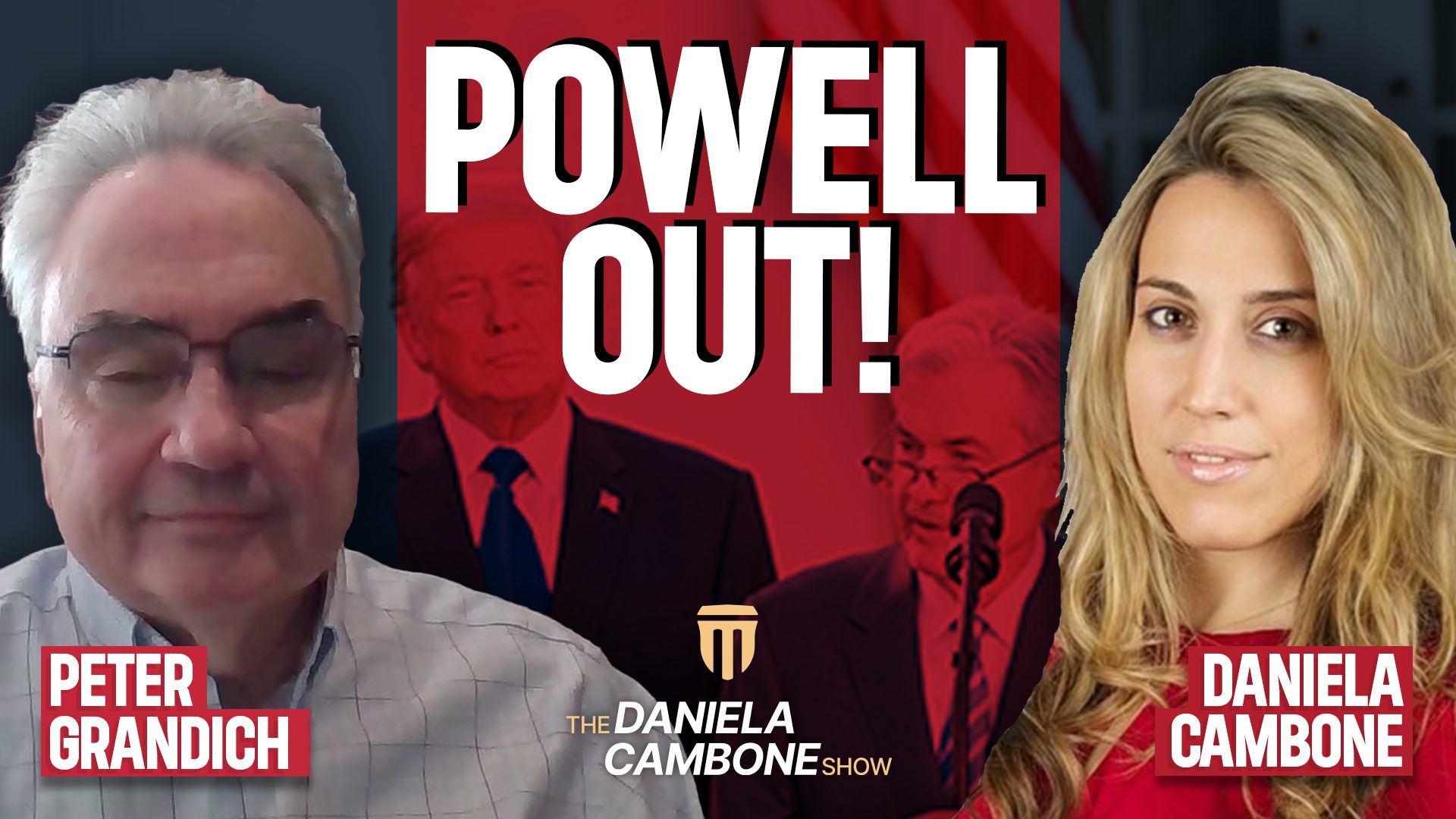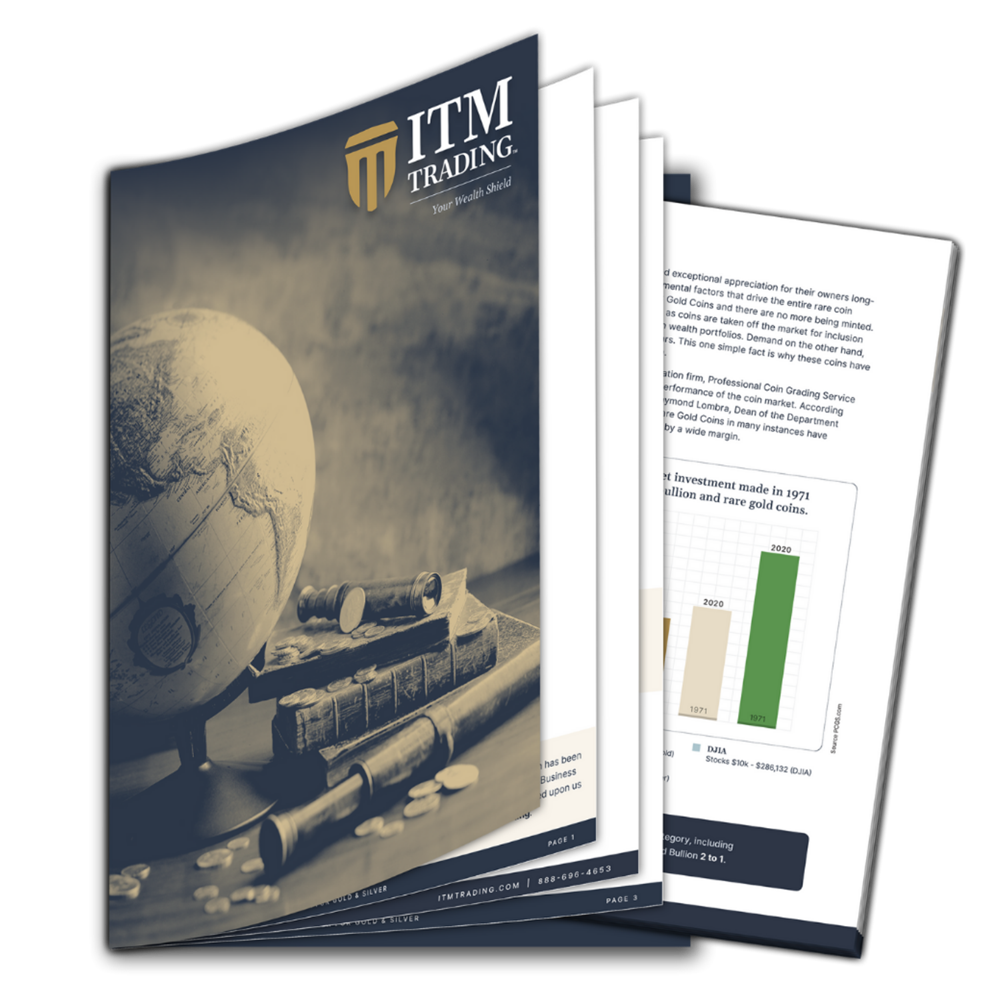The $5 Indian Head Gold Half Eagle
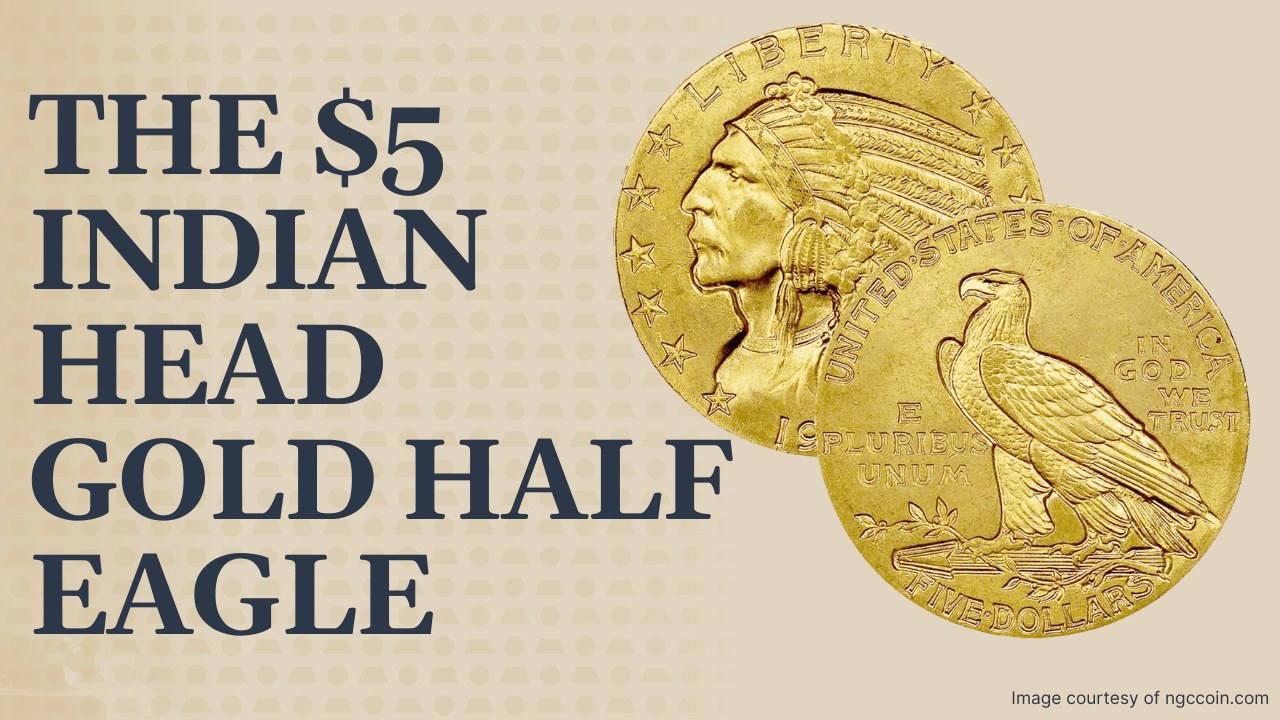
One of the most unique and controversial coins in U.S. history.
The $5 Indian Head Gold Half Eagle, minted from 1908 to 1916, and once more in 1929, stands out in American coinage for its incuse design—where the artwork is carved into the surface of the coin rather than raised. Only two U.S. coins ever used this bold format: the $5 Indian and its smaller sibling, the $2.50 Indian Quarter Eagle.
Designed by Bela Lyon Pratt, a protégé of famed sculptor Augustus Saint-Gaudens, the coin was part of President Theodore Roosevelt’s ambitious vision to redesign American currency into true works of art. Pratt’s sunken relief technique, inspired by ancient Egyptian art and recommended by Roosevelt’s friend Dr. William Bigelow, sparked both admiration and controversy. Some critics at the time even feared the coins could trap dirt and spread disease—an early 20th-century concern that didn’t age well.
Design Highlights
- Obverse: Features a left-facing Native American chief in a feathered headdress. Unlike earlier coins, this is believed to depict real Native American figures—not Liberty in disguise.
- Reverse: A stately bald eagle perched on arrows and an olive branch, symbolizing both strength and peace. The inscriptions include UNITED STATES OF AMERICA, E PLURIBUS UNUM, and IN GOD WE TRUST.
- Designer Initials: “B.L.P.” for Bela Lyon Pratt appear just below the portrait.
- Gold Content: .24187 troy ounces of 90% pure gold.
- Face Value: $5
Images courtesy NGCCOIN.com
History & Legacy
- Minted at Philadelphia, Denver, New Orleans, and San Francisco.
- Production paused after 1916 and returned for a single year in 1929 before ending due to the Great Depression.
- Many coins were later melted down during the government’s 1933 gold recall, making surviving specimens—especially from 1929—highly sought after by collectors.
The $5 Indian Head was groundbreaking in more ways than one. It was among the first U.S. coins to portray an actual Native American instead of an allegorical Liberty and used a completely new sculptural method. Yet its radical departure from traditional coinage made it both admired and misunderstood.
Today, these coins are appreciated for their beauty, rarity, and historical significance. Extremely Fine (XF) condition coins often sell for 30% or more above gold value, while rare dates like the 1909-O, 1911-D, and especially the 1929 issue command steep premiums.
Why Collect the $5 Indian Head Today?
- Historical Appeal: A relic from Roosevelt’s golden age of coinage.
- Unique Design: One of only two incuse U.S. coin types ever minted.
- Scarcity & Demand: Melted in large numbers and highly collectible.
- Gold Content: Tangible, inflation-resistant value.=
Whether you’re a history buff, gold investor, or passionate collector, the $5 Indian Head Gold Half Eagle offers a rare chance to hold a piece of American legacy in your hands.
For questions or to learn more about owning this piece of history, call us today at 866-696-4653.
